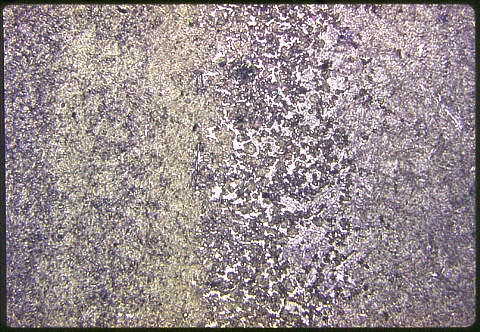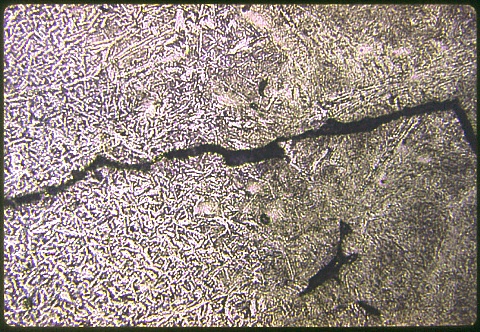Microstructures
by
George
Langford, Sc.D., Massachusetts Institute of Technology, Cambridge, MA,
1966
Copyright©2005 by George Langford
Surface Coatings and Heat
Resisting Alloys - Lesson 3
- Second specimen

|
The user of this cement mixer shaft demanded that the
steelmaker replace the shaft after it failed.
The first photomicrograph shows the transition zone between a surface
layer and the base metal (AISI 4140 steel) at 200X magnification.
The shaft appears to have been "built up" (enlarged) by flame spraying
with a low carbon steel, which is to the right in this image. The
surface of the shaft has a cast, ferritic microstructure; underneath is
a carbon diffusion zone; and then there is a layer of (brown)
martensite.
There were MnS stringers visible in the microstructure, indicating the
wrought nature of the original shaft.
|

|
The second photomicrograph, shown at 500X at left, resolves
the cast microstructure of the built-up layer along with a large crack,
which was probably the result of transformation stresses during cooling
(martensitic transformation of the outer portion of the hardenable 4140
substrate metal) after the spraying process.
How do I know that I haven't got this image upside down with respect to
the first image ?
|
Answer: There is a cold
shut to the right of center. The apparent colors of the
microstructure often change with different magnifications.
|